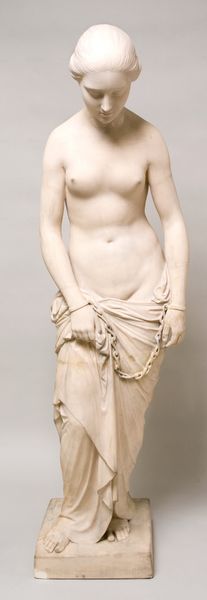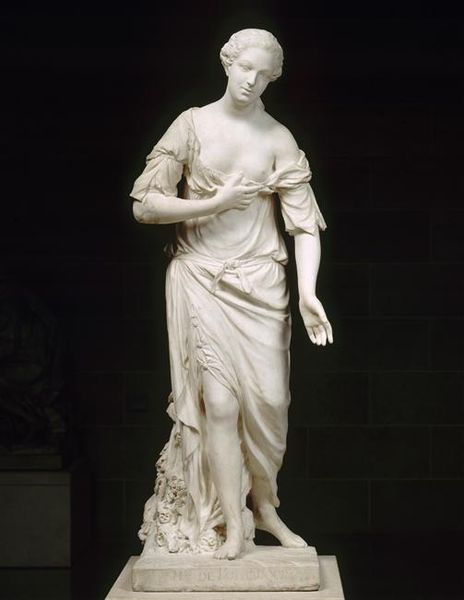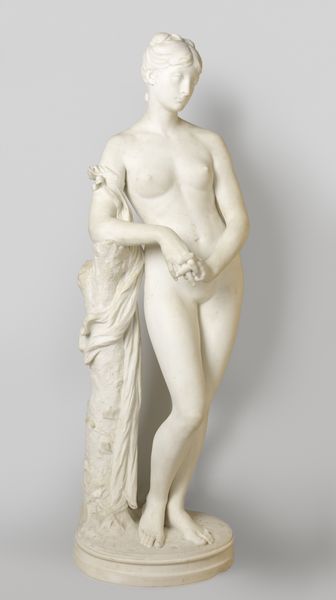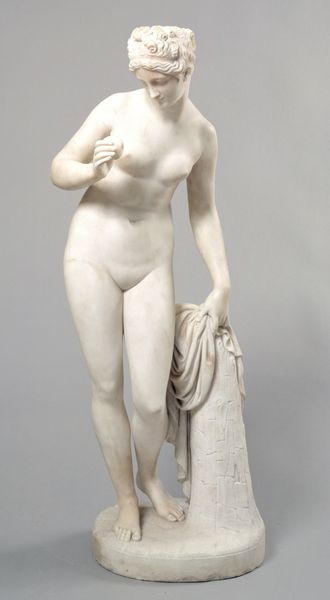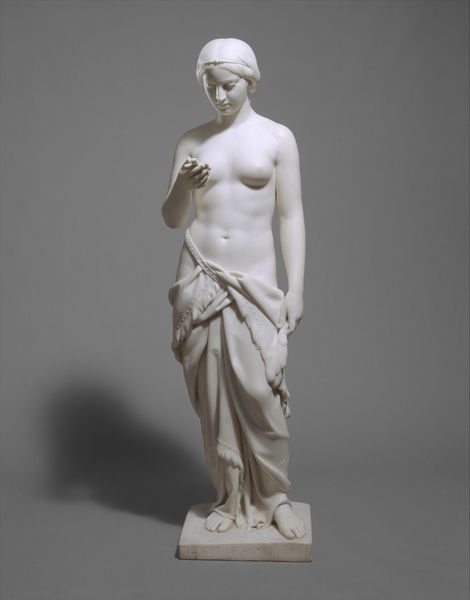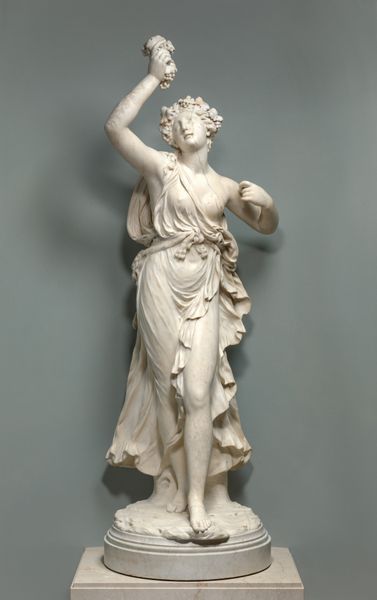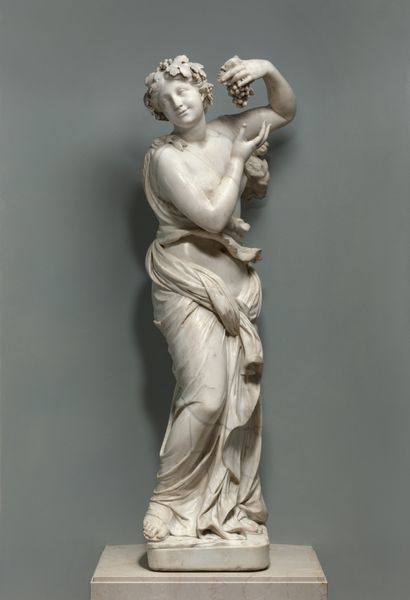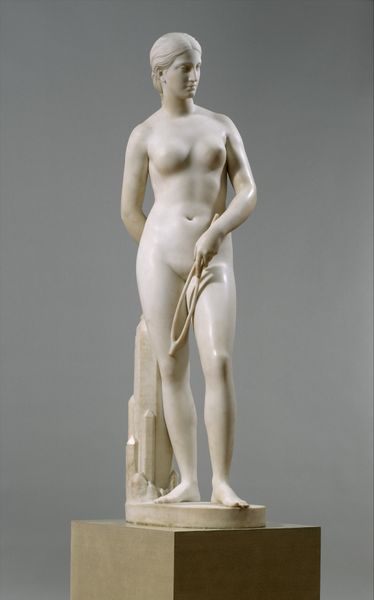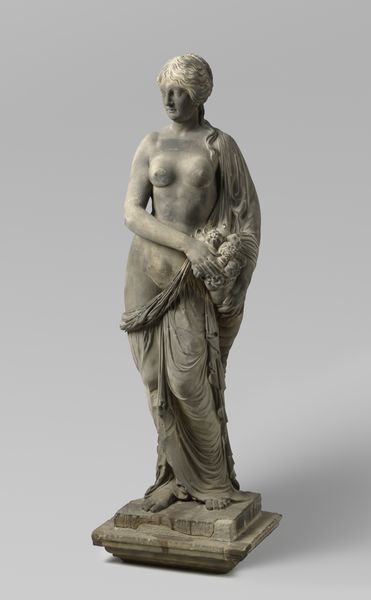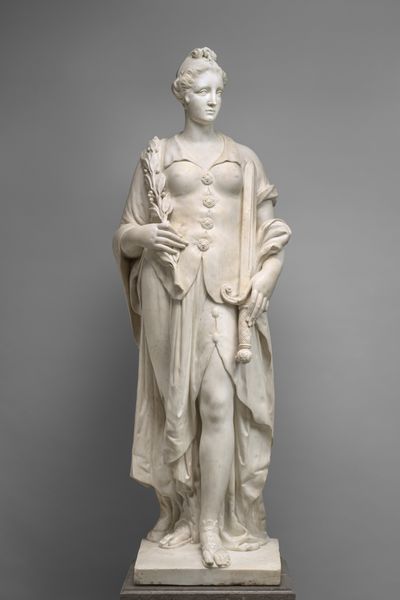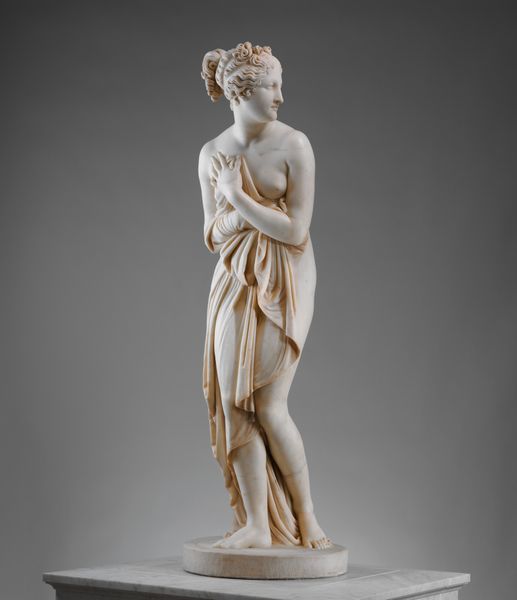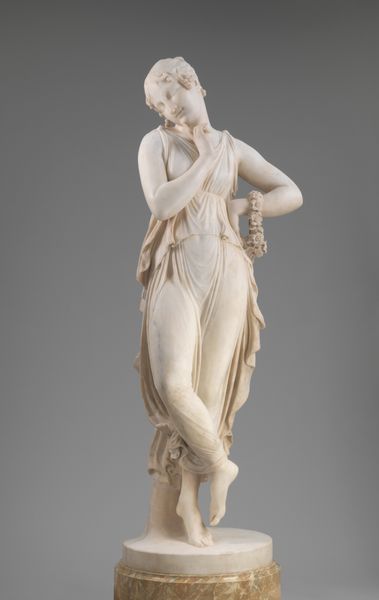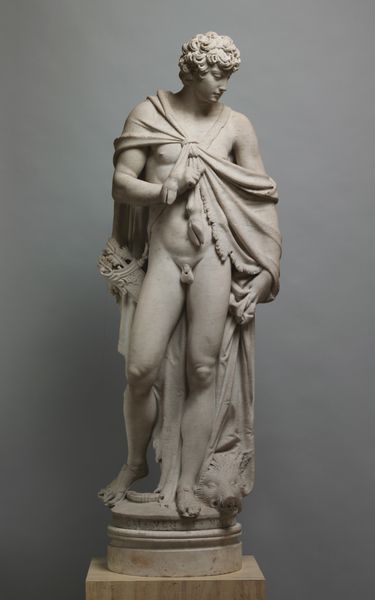
sculpture, marble
#
portrait
#
neoclacissism
#
allegory
#
sculpture
#
greek-and-roman-art
#
classical-realism
#
figuration
#
sculpture
#
history-painting
#
marble
#
nude
Dimensions: 58 x 19 x 20 1/2 in. (147.3 x 48.3 x 52.1 cm)
Copyright: Public Domain
Curator: Before us stands "Hebe," a marble sculpture crafted between 1801 and 1806 by Simeon Skillin. It resides here at the Metropolitan Museum of Art. Editor: It's strikingly…icy. The smooth, pale marble, the deliberate contrapposto – she seems both monumental and untouchable. I immediately think of the economic resources required to secure and carve such an expensive block. Curator: Indeed. The cool detachment reflects the Neoclassical movement's interest in idealized forms and stoic virtue. Let's delve into the iconography; Hebe, in Greek mythology, is the goddess of youth, and cupbearer to the gods. Notice the ewer she holds aloft – from this, she serves nectar, bestowing immortality. Editor: The gesture, the offering… is she complicit in a divine cycle of exploitation, keeping the gods youthful at an unseen cost? Marble was prized in the 19th century. How would access to this kind of fine material impacted workshop structure and hierarchies? It suggests an artisan class capable of high craft dedicated to an elite clientele. Curator: A valid point. But also observe how Skillin has adopted visual motifs from antiquity, deliberately linking America, through its art, to the grandeur of ancient Greece and Rome. The allusion reinforces democratic ideals but the reality is tied to class and consumption. The drape and pose all call on prior versions. Editor: I’m drawn to the rough texture of the base, which is such a departure from the flawless, polished figure. Was this choice a pragmatic decision? Does it ground the otherwise ethereal goddess in something altogether earthier and accessible? The making of this piece, its construction as an item destined for display... these considerations inevitably shift meaning. Curator: The material presence juxtaposed with an allegorical one is interesting. Hebe embodies more than eternal youth, as its material is eternal as well. Editor: Looking at "Hebe" now, I’m more aware of the complex social dynamics inherent in its production and reception. It highlights how art becomes intertwined with economics and human interaction through history. Curator: And the weight symbols carry that echoes far beyond any individual lifetime or singular act of creation. Thank you.
Comments
No comments
Be the first to comment and join the conversation on the ultimate creative platform.
